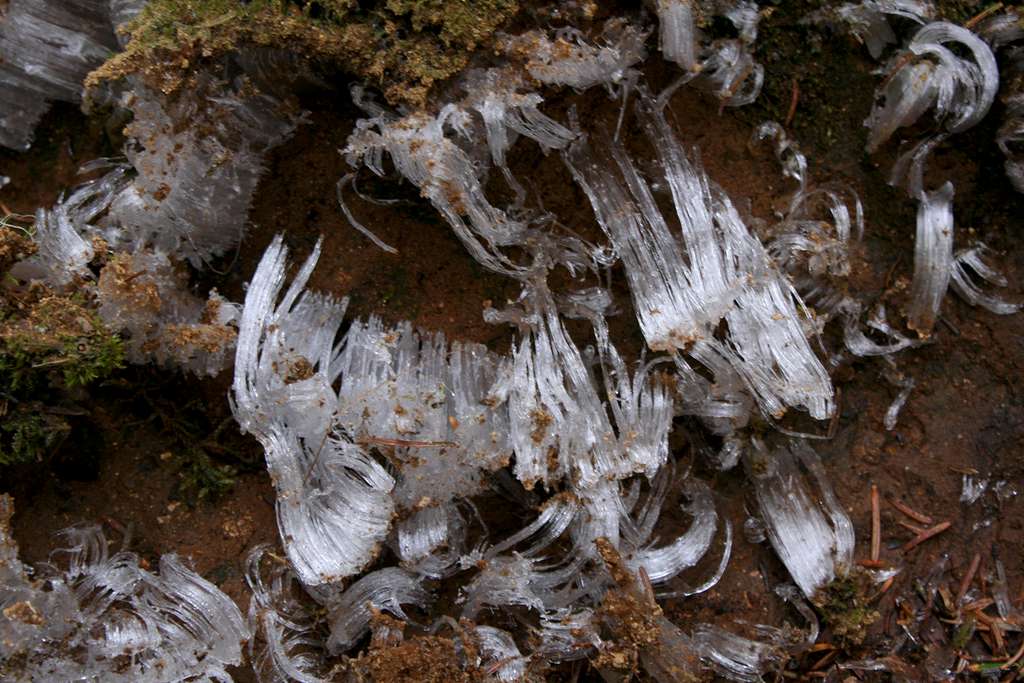banzai.barbara - Nov 10, 2008 11:56 am - Voted 10/10
it reminds me a lot ofa speleothem called GYPSUM FLOWERS
If I didn't misinterpreted your caption, even the growing process /condition seems pretty much the same. interesting.
:) ciao
b.
nartreb - Nov 10, 2008 2:18 pm - Hasn't voted
Re: it reminds me a lot ofYes, very much. Of course I'm only guessing about the formation process of the frost, but that's exactly the kind of mechanism I had in mind (except that instead of solutes crystalizing out, it's the moisture itself that freezes when exposed to air).
johnbrady63 - Nov 12, 2008 4:51 pm - Voted 10/10
CoolNice pic, at 1st I thought it was a birds feathers after something ate it for dinner..
Marcsoltan - Dec 10, 2008 2:06 pm - Voted 10/10
A different theory!I think the moisture comes from the ground and it freezes at night. As far as crving goes process goes, I think each collumn begins to curve right after formation, but since the amount is minute it's not noticable.
Great photo,
Marc
nartreb - Dec 11, 2008 10:03 am - Hasn't voted
Re: A different theory!>I think the moisture comes from the ground and it freezes at night.
Yes.
>I think each collumn begins to curve right after formation...
I think you mean that even the shortest column has a slight curve, but that it's hard to notice on short columns; as the column grows the degrees-curve-per-cm stays constant but the total degree of turning increases with total length.
I think the degrees-curve-per-cm is variable; you can see that if you compare different columns within this picture. You can also see that the curvature sometimes changes direction. The amount of bending seems to depend on the nature of the debris at the top of the column, and on how "crowded" the column is by neighboring columns. In your theory, columns would all curve in parallel, no matter how tightly packed together, and the curve would never change tightness or direction.
I am more or less convinced that not all the bending happens at the point of growth; I think the ice retains a little bit of plasticity.
Marcsoltan - Dec 11, 2008 2:06 pm - Voted 10/10
Re: A different theory!I agree with all your observations and conclusion.
I hope I run into something like this. I probably sit there and stare, and wife is going to think I have lost my marbles.
Thank you for getting back,
Marc
Marcsoltan - Dec 11, 2008 2:06 pm - Voted 10/10
Re: A different theory!I agree with all your observations and conclusion.
I hope I run into something like this. I probably sit there and stare, and wife is going to think I have lost my marbles.
Thank you for getting back,
Marc
nartreb - Jan 15, 2009 9:46 am - Hasn't voted
Re: A different theory!Actually, reading Baarb's link again, I see another theory. The curvature could be caused by unequal availability of new water at the base of the column. If the flow of water varied over time, that could explain why the direction of curvature can change.










Comments
Post a Comment